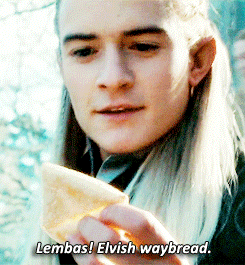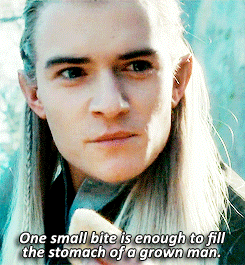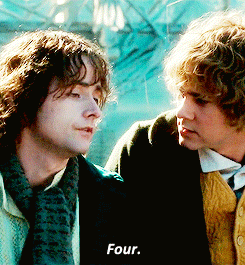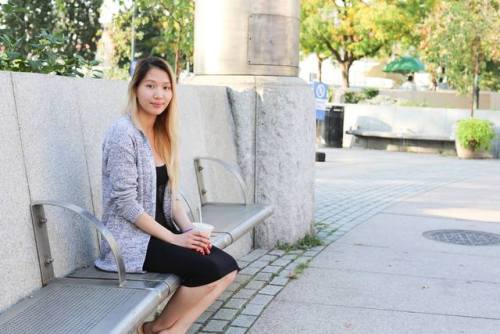First And Last Appearances.










First and last appearances.
More Posts from Smparticle2 and Others






Green method developed for making artificial spider silk
A team of architects and chemists from the University of Cambridge has designed super-stretchy and strong fibres which are almost entirely composed of water, and could be used to make textiles, sensors and other materials. The fibres, which resemble miniature bungee cords as they can absorb large amounts of energy, are sustainable, non-toxic and can be made at room temperature.
This new method not only improves upon earlier methods of making synthetic spider silk, since it does not require high energy procedures or extensive use of harmful solvents, but it could substantially improve methods of making synthetic fibres of all kinds, since other types of synthetic fibres also rely on high-energy, toxic methods. The results are reported in the journal Proceedings of the National Academy of Sciences.
Spider silk is one of nature’s strongest materials, and scientists have been attempting to mimic its properties for a range of applications, with varying degrees of success. “We have yet to fully recreate the elegance with which spiders spin silk,” said co-author Dr Darshil Shah from Cambridge’s Department of Architecture.
Read more.




Sleeping brain's complex activity mimicked by simple model
Researchers have built and tested a new mathematical model that successfully reproduces complex brain activity during deep sleep, according to a study published in PLOS Computational Biology.

Recent research has shown that certain patterns of neuronal activity during deep sleep may play an important role in memory consolidation. Michael Schellenberger Costa and Arne Weigenand of the University of Lübeck, Germany, and colleagues set out to build a computational model that could accurately mimic these patterns.
The researchers had previously modeled the activity of the sleeping cortex, the brain’s outer layer. However, sleep patterns thought to aid memory arise from interactions between the cortex and the thalamus, a central brain structure. The new model incorporates this thalamocortical coupling, enabling it to successfully mimic memory-related sleep patterns.
Using data from a human sleep study, the researchers confirmed that their new model accurately reproduces brain activity measured by electroencephalography (EEG) during the second and third stages of non-rapid eye movement (NREM) sleep. It also successfully predicts the EEG effects of stimulation techniques known to enhance memory consolidation during sleep.
The new model is a neural mass model, meaning that it approximates and scales up the behavior of a small group of neurons in order to describe a large number of neurons. Compared with other sleep models, many of which are based on the activity of individual neurons, this new model is relatively simple and could aid in future studies of memory consolidation.
“It is fascinating to see that a model incorporating only a few key mechanisms is sufficient to reproduce the complex brain rhythms observed during sleep,” say senior authors Thomas Martinetz and Jens Christian Claussen.



“I was on a leadership team in 5th grade. At the end of the year we were supposed to take a trip to Washington DC. We held fundraisers and everything. But when it was time to go, I didn’t have the identification papers to buy a plane ticket. So our teacher Ms. Rivera decided that we’d take a bus. Just so I could go too. That trip changed my life. It made me want to be a lawyer. And Ms. Rivera became one of the closest people in my life. She always kept in touch. She basically watched me grow up. One time in high school I got in a huge fight with my mom, and Ms. Rivera came and took me on a long car ride. I started to tell her everything. I told her about a recent break-up, and how I smoked weed, and ‘I did this,’ and ‘I did that.’ She just listened to everything. Then she started telling me about her life too. She told me that she’d been in an abusive relationship. I’d always thought her life was perfect because she was a guidance counselor. But she’d been through so much too. When it was came time to apply for college, Ms. Rivera was the one who helped me apply for DACA. She told me about the TheDream.us scholarship. I didn’t even want to apply. I was ready to give up. I’d just accepted that I’d always work in restaurants like my mom. But Ms. Rivera made me apply. She said: ‘What happened to that girl who wanted to be a lawyer?’ I learned that I got the scholarship in February. They’re paying for my entire college. Ms. Rivera was so proud of me. She kept saying: ‘I told you so.’”















-
 rubyjojo liked this · 1 week ago
rubyjojo liked this · 1 week ago -
 uotzy liked this · 2 weeks ago
uotzy liked this · 2 weeks ago -
 photosyntheticfern reblogged this · 2 weeks ago
photosyntheticfern reblogged this · 2 weeks ago -
 september-again liked this · 2 weeks ago
september-again liked this · 2 weeks ago -
 lordofdarkness1004 liked this · 2 weeks ago
lordofdarkness1004 liked this · 2 weeks ago -
 axmmatt liked this · 2 weeks ago
axmmatt liked this · 2 weeks ago -
 chanceofbrainstormz liked this · 2 weeks ago
chanceofbrainstormz liked this · 2 weeks ago -
 wolfie-3008 liked this · 2 weeks ago
wolfie-3008 liked this · 2 weeks ago -
 lilacerull0 liked this · 2 weeks ago
lilacerull0 liked this · 2 weeks ago -
 c3rule4n liked this · 2 weeks ago
c3rule4n liked this · 2 weeks ago -
 ad-astra-per-aspera-1389 reblogged this · 2 weeks ago
ad-astra-per-aspera-1389 reblogged this · 2 weeks ago -
 ad-astra-per-aspera-1389 liked this · 2 weeks ago
ad-astra-per-aspera-1389 liked this · 2 weeks ago -
 watermelomana liked this · 2 weeks ago
watermelomana liked this · 2 weeks ago -
 puppyhigh reblogged this · 2 weeks ago
puppyhigh reblogged this · 2 weeks ago -
 deryaihdal liked this · 2 weeks ago
deryaihdal liked this · 2 weeks ago -
 iamnotnico liked this · 2 weeks ago
iamnotnico liked this · 2 weeks ago -
 mainlyghostbustersart liked this · 2 weeks ago
mainlyghostbustersart liked this · 2 weeks ago -
 humanbeanisnotamused reblogged this · 2 weeks ago
humanbeanisnotamused reblogged this · 2 weeks ago -
 whoscallingwhoafraud reblogged this · 2 weeks ago
whoscallingwhoafraud reblogged this · 2 weeks ago -
 underfalls-36 liked this · 2 weeks ago
underfalls-36 liked this · 2 weeks ago -
 elenagrec reblogged this · 2 weeks ago
elenagrec reblogged this · 2 weeks ago -
 elenagrec liked this · 2 weeks ago
elenagrec liked this · 2 weeks ago -
 a-teeny-tiny-peen liked this · 2 weeks ago
a-teeny-tiny-peen liked this · 2 weeks ago -
 themultifandomfreak liked this · 2 weeks ago
themultifandomfreak liked this · 2 weeks ago -
 jimmypage7 reblogged this · 2 weeks ago
jimmypage7 reblogged this · 2 weeks ago -
 jimmypage7 liked this · 2 weeks ago
jimmypage7 liked this · 2 weeks ago -
 ariemfox reblogged this · 2 weeks ago
ariemfox reblogged this · 2 weeks ago -
 sippingmychai reblogged this · 2 weeks ago
sippingmychai reblogged this · 2 weeks ago -
 thevioletfish reblogged this · 2 weeks ago
thevioletfish reblogged this · 2 weeks ago -
 greghousebignaturals reblogged this · 2 weeks ago
greghousebignaturals reblogged this · 2 weeks ago -
 ferretwhomst reblogged this · 2 weeks ago
ferretwhomst reblogged this · 2 weeks ago -
 ferretwhomst liked this · 2 weeks ago
ferretwhomst liked this · 2 weeks ago -
 shartfart300 liked this · 2 weeks ago
shartfart300 liked this · 2 weeks ago -
 stonequiet reblogged this · 2 weeks ago
stonequiet reblogged this · 2 weeks ago -
 taiga013 liked this · 2 weeks ago
taiga013 liked this · 2 weeks ago -
 maudlin-scribbler liked this · 2 weeks ago
maudlin-scribbler liked this · 2 weeks ago -
 return-of-the-prodigal-daughter reblogged this · 2 weeks ago
return-of-the-prodigal-daughter reblogged this · 2 weeks ago -
 perplexed-confusion liked this · 2 weeks ago
perplexed-confusion liked this · 2 weeks ago -
 stabbyhobbit reblogged this · 2 weeks ago
stabbyhobbit reblogged this · 2 weeks ago -
 drhedicalhalpractice reblogged this · 2 weeks ago
drhedicalhalpractice reblogged this · 2 weeks ago -
 philosopherjagger liked this · 2 weeks ago
philosopherjagger liked this · 2 weeks ago -
 rainacre reblogged this · 2 weeks ago
rainacre reblogged this · 2 weeks ago -
 hot-npc liked this · 2 weeks ago
hot-npc liked this · 2 weeks ago -
 stonequiet liked this · 2 weeks ago
stonequiet liked this · 2 weeks ago -
 pennaater reblogged this · 2 weeks ago
pennaater reblogged this · 2 weeks ago -
 beginningisending liked this · 2 weeks ago
beginningisending liked this · 2 weeks ago -
 kafkaisnotdead liked this · 2 weeks ago
kafkaisnotdead liked this · 2 weeks ago -
 armydreamerr liked this · 2 weeks ago
armydreamerr liked this · 2 weeks ago -
 all-pacas reblogged this · 2 weeks ago
all-pacas reblogged this · 2 weeks ago